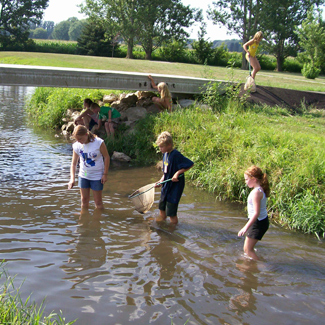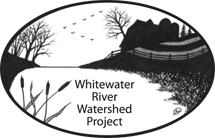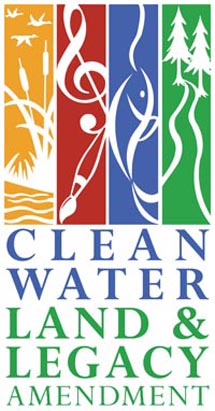Citizen Collaboration in Minnesota’s Olmsted, Wabasha & Winona Counties
The Whitewater River Watershed Project works for better water quality, less erosion and flooding, habitat for diverse plants and animals, and a land stewardship ethic among citizens who live, work, and play in the watershed. Work is directed by the Whitewater Joint Powers Board, a group of elected commissioners and Soil and Water Conservation District directors from the three counties. Citizens may join them for regular meetings on the fourth Tuesday of February, May, August and November at Whitewater State Park Visitor Center, 8:30 a.m. Current projects build on citizen work begun in 1938, when the Whitewater River flooded 28 times, burying farms and the town of Beaver in silt. Farmers responded then by voluntarily adopting new tillage and management practices, which reduced erosion and flooding and improved farms. Minnesota’s first Soil & Water Conservation District was established here then, to lead and assist. Concern about massing sediment at the confluence of the Whitewater and Mississippi Rivers brought landowners and local, state, and federal conservation staff together in 1987 to look at upstream sources. A successful erosion reduction project on the Middle Whitewater River led to more opportunities, so the Joint Powers Board formed in 1989 to facilitate shared work. 
The Whitewater River and tributaries drain 205,000 acres in southeast Minnesota. The 16.6-mile main stem forms where the North and Middle Branches flow together at the town of Elba. A third main tributary, the South Branch, enters the main stem a short distance downstream. Whitewater and Carly State Parks are located in this watershed. With adjacent wildlife management and state natural areas, they offer thousands of acres of natural habitat and year-long outdoor recreation opportunities.
Planning & Wise Action On a 10-Year Cycle
The Whitewater River lies within the Mississippi River-Winona Watershed, one of Minnesota’s 80 major drainage areas. At the direction of the Minnesota Legislature, water quality goals and a working action plan are established every 10 years in each major watershed. Work is carried out, and results are measured and reported. That process is facilitated in the Mississippi River-Winona Watershed by the Whitewater River Joint Powers Board.
OUR WORK
The Whitewater River Watershed Project exists to continue to nurture a land stewardship ethic among those who live, work, and recreate in the watershed. We focus on improving water quality, reducing sedimentation and flooding, and improving habitat for all plants and animals. WE EDUCATE AND FOCUS ATTENTION ON STREAM HEALTH & WATER QUALITY · OBTAIN FUNDING · CONNECT PEOPLE TO INFORMATION AND PROGRAMS · FACILITATE COLLABORATION
Get InvolvedMinnesota’s First Farmer-Led Council
To encourage voluntary conservation of farmland, streams, and groundwater, 26 farmers in the Logan Creek and Middle Branch areas established a farmer-led council in 2011, with support from the Whitewater River Watershed Project and funder Fishers & Farmers Partnership For the Upper Mississippi River Basin. Work focuses on local solutions and has included surveys; field tours; multi-year field trials and data sharing; council-selected projects; financial incentives; education events; public speaking; mentoring; and connecting with neighbors both informally and in facilitated community conversations. Minnesota Department of Agriculture piloted its Agricultural Water Quality Certification program here in cooperation with the council. Members participate in the program and encourage neighbors to use its methodical approach to farm and stream health.
Take Action On Your Own Land
Tap box to find programs, resources, and local contacts.
Events!
Document Archive
Select box to access documents and learn more.



